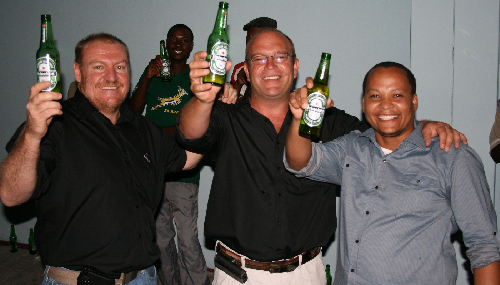
Proposed merger and acquisitions: A case analysis of Heineken, NBL and Distell

By Josef Kefas Sheehama.
Undoubtedly today we live in a time of significant economic change. Mergers and acquisitions have become common business tools, implemented by thousands of companies in world.
The Namibian Competition Commission, under section 22 of the Competition Act, 2003 (Act No. 2 of 2003) is to safeguard and promote competition in the Namibian market. Parties with serious intention to enter into Mergers & Acquisitions are required in terms of Section 44(1) of the Act to notify the Commission of the proposed merger (www.nacc.com.na).
Heineken N.V. is a Dutch multinational brewing company. As of 2019, Heineken owns over 165 breweries in more than 70 countries. It produces 348 international, regional, local and specialty beers and ciders. The company has a Profit Margin (PM) of 5.5%, which can signify that it executes well on its competitive strategies and has good control over its expenditures. The margin is normal compared to the sector average.
Similarly, it shows Operating Margin (OM) of 13.91%, which suggests for every 100 dollars of sales, it generated a net operating income of 0.14. The return on total asset (ROA) of 3.99% means that it generated profit of $3.99 on every $100 spent on asset. This is also fairly normal compared to the sector average.
Heineken’s Return on Equity (ROE) of 9%, means that it generated $9 on every $100 dollars invested by stockholders. Heineken manages its routine affairs well including how it manages its balance sheet. It has a globally balanced footprint with growth potential: – 70+ Countries, 160+ Breweries, 300+ Brands, 241mhl Consolidated Beer Volume and 54% of profit from developing market (http://www.heineken.com). Heineken has wide international presence through a global network of distributors and breweries. It is a highly respected brand, certainly not a gly by night.
Namibia Breweries is Namibia’s market leader in beverage manufacturing and have a significant share of the region’s premium beer category. Operating profit increased by 4% to N$358 million. NBL’s debt-to-equity ratio remained healthy at 28.3% (2021: 34.1%). The group EPS is 180.70 while HEPS is 178.20. The group performs very well. Consolidated net revenue increased by 0.1% from N$2 646 million to N$2 649 million for the year ended 30 June 2021 (https://www.nambrew.com).
Distell, a global business with roots in South Africa, produces and markets a diverse portfolio such as wineries & breweries, amongst others. Group revenue increased by 26% to R28,3 billion on 26,3% higher volumes. Revenue excluding excise duty was up by 24%. The financial position as at 30 June 2021 indicated a solvent position. Therefore, NBL and Distell Namibia will join a giant in the market. A combination of these businesses will results strong synergies, expanding operations and increased profitability.
Furthermore, Heineken NV has offered to buy Ohlthaver & List Group of Companies (O&L)’s 50.01% stake in NBL Investment Holdings (Proprietary) Limited, the controlling shareholder with a 59.4% shareholding in NBL. This means total acquisition and not a merger should the Namibian Competition Commission approve the proposal. Economic growth continues due to the growing investment in private equity and the untapped markets.
Since the Namibian Competition Commission has to be notified in advance of any proposed merger acquisition to assess the potential impact on consumers, The commission has the right to stop any merger and acquisition which poses a major threat to the consumer’s welfare.
In the case of Heineken’s acquisitions, the primary objective is to attain synergy and to birth a more resilient entity. Namibia Breweries Limited and Distell Namibia are currently dominating the local industry. The acquisitions of NBL and Distell without affecting the brand names will enhance synergy. This means that NBL and Distell will exist and continue their operations but they have to work under acquirer name and their terms. The main objective of this acquisition is to improve present performances, decrease the competition in the market, and to gain technology, expertise and economies of scale.
This is a good acquisition for all parties as it will help the conglomerate to fill in gaps in Namibia, get better access to emerging markets and also strengthen its presence in the domestic market. It offers a good opportunity to promote Namibian products, services and destinations, regionally and internationally. At the same time, it paves the way for investors who want to expand into new geographical regions. To be true, the rise of multinational corporations from emerging markets creates new sources of FDI. This is all the more important as, traditionally, foreign investors concentrate in capitals, often leaving other countries in the mainstream of economic development. In the end, all investment is local, hence local opportunities need to be brought to the attention of investors, and the local regulatory and business environment needs to be competitive.











































